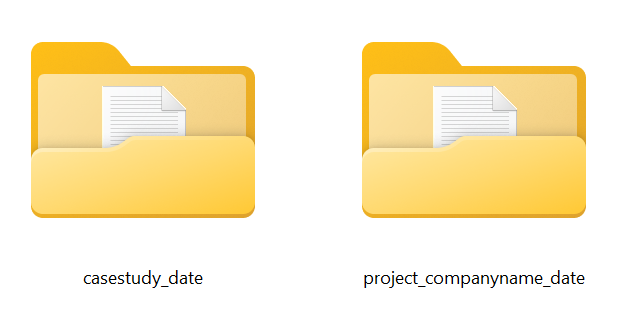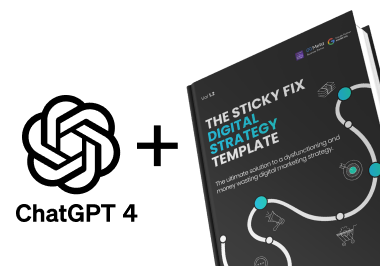What is metadata framework, and do you really need one? If you’ve ever searched for a client file in your system and ended up buried under irrelevant results, you’ve likely suffered from a lack of metadata structure. It’s the backbone of how modern digital information is stored, searched, and understood, especially in data-heavy fields like law, marketing, and healthcare.
Imagine you’re a lawyer working through dozens of case files, documents, and correspondence. Each file is labelled, but nothing is standardised. One colleague uses “Date_DocumentType_CaseCode” while another prefers “CaseCode_DocumentType”. As your practice grows, your filing system becomes more chaotic. Searching for a critical piece of information becomes frustrating, if not impossible. That’s where a metadata framework comes in.
Why Metadata Frameworks Matter in a Data-Driven World
Data is everywhere, especially in the modern digital landscape. Managing the vast numbers of information effectively is the difference between clarity and chaos. Without a metadata framework, businesses are vulnerable to inefficiencies, data loss, and miscommunication. These issues slow down operations, compromise client trust, waste billable hours, and cost money.
A metadata framework acts as a structured system for managing data consistently across datasets, platforms, or systems. It makes sure that everyone on your team speaks the same data language, no matter where or how that data is stored. You get cleaner databases, more accurate searches, and smoother information sharing.
Anatomy of a Metadata Framework
At its core, a metadata framework is made up of a few essential components that work together to keep your data consistent and usable.
Metadata Standards
Standards are the rules and guidelines that govern how metadata is created, stored and maintained. Such standards typically are developed by globally recognised quality assurance bodies such as the Dublin Core or ISO standards. While adhering to these standards is essential in regulated environments or when compliance is required, in other cases, organisations have the flexibility to develop their own internal business frameworks tailored to their specific needs.
Data Models
A data model maps out the structure and location of your metadata. Think of it as the blueprint for how your data elements are stored. A structured model ensures that all your files are organised and easily found, so data isn’t just labelled properly but also stored in a logical and predictable way.
Controlled Vocabularies and Schemes
A controlled vocabulary is a curated list of terms used to categorise data. Instead of calling one document a ‘contract’ and another a ‘legal agreement’, you pick a single term and use it consistently. This avoids confusion and makes searching much easier.
Types of Metadata and Frameworks at Work
Metadata isn’t one-size-fits-all. What is metadata framework, and what purpose does each one serve?
Descriptive metadata
Descriptive metadata helps identify and locate content by including details like titles, authors, keywords, or tags. In the context of a legal contract, this might include the client’s name, matter number, and type of legal service. This type of metadata improves searchability within internal systems and enhances visibility through search engines.
For example: When uploading a document to a shared folder, you might enter the title, client name, and a few keywords so it’s easier to find later using search.
Structural metadata
Structural metadata explains how a file is organised. It defines the structure of the content, such as sections, chapters, and annexures. For example, in a multi-page legal document, structural metadata enables the creation of a clickable table of contents and supports tools that assemble documents automatically based on pre-set formats.
For example: In a large PDF report, structural metadata is what allows you to click on a section in the table of contents and jump straight to that part of the file.
Administrative metadata
Administrative metadata captures the technical and access-related information of a file. It includes details about who created it, when it was last updated, the file format, and access permissions. In industries with strict compliance requirements, this type of metadata is essential for audits, legal discovery, and managing access and retention policies.
For example: When you open a file and see who created it, when it was last edited, and who’s allowed to view it, that’s administrative metadata at work.
Preservation metadata
Preservation metadata is designed to ensure that digital content remains accessible and usable over time. It records the history of file format changes, software migrations, and any modifications made to the document. For instance, if an old Word document is converted to a PDF for long-term storage, preservation metadata logs are created to transition to maintain continuity and prevent data loss.
For example: If an old file is saved in a newer format so it can still be opened on today’s software, preservation metadata keeps a record of that change so nothing important is lost.
Metadata Standards Examples
Dublin Core
One of the most widely used metadata standards is Dublin Core, which consists of 15 core elements such as title, creator, subject, and date. These elements are intentionally broad and flexible, making them ideal for cross-disciplinary use.
Dublin Core is the standard of choice for digital libraries, institutional repositories, and educational archives. It provides a lightweight, easy-to-implement framework that promotes interoperability between systems, especially useful for organisations that aggregate content from multiple sources. For instance, Trove, managed by the National Library of Australia, and ProQuest, a global provider of educational research databases, both rely on Dublin Core to standardise and connect massive amounts of metadata from different contributors.
What makes Dublin Core especially powerful is its extensibility. You can start simple, and expand it with qualified terms when your needs become more complex. For example, “creator” one of the Dublin Core elements, can later be qualified by role or affiliation, enabling more granular control over metadata relationships.
EXIF (Exchangeable Image File Format)
EXIF is a metadata standard embedded directly into image files, especially JPEGs and TIFFs, generated by digital cameras and smartphones. It captures technical metadata such as shutter speed, aperture, ISO, GPS coordinates, date, time, and even camera make and model.
For industries like digital forensics, photojournalism, and eCommerce, EXIF data plays a crucial role. It helps verify authenticity, automate image sorting, and provide searchable context to large image collections. Moreover, in consumer applications like Google Photos or Apple iCloud, EXIF metadata powers smart categorisation and facial recognition features.
However, EXIF metadata can also raise privacy concerns. Many users are unaware that sharing photos online can expose their location or personal device information. Proper metadata sanitisation tools are recommended when sharing files publicly, especially if photos have sensitive or private information.
MARC (Machine-Readable Cataloguing)
MARC is a system that libraries have used for many years to organise and share book information. It’s common in places like school libraries, public libraries, and government collections. MARC helps store detailed information about books in a format that computers can understand and use.
It doesn’t just list the basics like title and author. It also keeps track of things like different editions of the same book, if a book is part of a series, or if it’s been translated. This makes it very helpful for managing large book collections.
Even though it can be harder to learn than other systems, MARC is great for libraries that need to keep very accurate records over time. For example, the State Library of Victoria and the University of Sydney Library use MARC to manage their huge catalogues and make sure everything is properly organised and easy to find.
Considerations for Using a Metadata Framework
Before diving into implementation, evaluate how a metadata framework will interact with your organisation’s specific goals, workflows, and systems:
Selecting Standards – Choose metadata standards that align with your industry and organisational goals. Legal firms might rely on international standards like ISO or sector-specific guidelines.
Customisation Without Chaos – Every business is unique. While customising your framework is often necessary, it should never come at the cost of consistency. Establish core fields and controlled vocabularies that everyone adheres to.
Scalability – As your data grows, your framework should grow with it. A scalable framework accommodates more files, more users, and more integrations without falling apart.
Integration with Tech Stacks – Whether you’re using cloud storage, CRMs, or legacy databases, your metadata framework should align with your existing systems. This makes implementation smoother and less disruptive.
Training and User Adoption – Even the most robust metadata framework will fail without user adoption. Staff across your organisation, from admin to senior leadership, all need to understand why metadata matters and how to use it effectively. Metadata training shouldn’t be a one-off onboarding session. It must be part of ongoing professional development, especially as systems evolve and new data types are introduced.
Metadata Challenges to Consider
Complexity and Maintenance
Implementing a metadata framework is not plug-and-play. It requires planning, training, and continuous oversight. Each component—from choosing standards to applying them across systems—demands active governance.
Metadata quality must be routinely audited, and staff must be trained on how to apply metadata consistently. Without this level of maintenance, your framework risks devolving into the same disorder it was meant to prevent.
Privacy and Security
Metadata can include sensitive information, such as usernames, timestamps, and geolocation data. If improperly stored or shared, it can pose a security risk—especially in industries dealing with confidential or regulated content.
Data governance policies should include strict access controls, encryption practices, and audit trails to track metadata interactions. You need to ensure access is appropriately restricted and compliant with standards like GDPR or HIPAA.
Standardisation Issues
While standards are meant to unify, the lack of universal adoption can create compatibility headaches, especially when working with external partners or across sectors. Even within a single organisation, departments may interpret standards differently.
Successful implementation often requires a metadata governance committee or steering group to enforce interpretation consistency, manage changes, and ensure interoperability with external stakeholders or legacy systems.
The Future of Metadata Frameworks and AI
We’re moving toward smarter, AI-driven metadata. Tools are emerging that automatically tag, categorise, and even interpret data using machine learning. This reduces manual input, improves accuracy, and uncovers relationships between datasets that may otherwise go unnoticed.
These systems are also becoming more integrated with mainstream platforms—allowing legal, healthcare, and creative professionals to benefit from automated workflows that are both intelligent and secure.
But AI isn’t a silver bullet. Success still depends on solid metadata foundations. That’s why becoming metadata-ready today matters more than ever. Start by auditing your current data practices.
Engage your team across departments to identify pain points and knowledge gaps. Then implement a metadata framework that suits your operational goals—whether it’s improving searchability, ensuring compliance, or creating consistency at scale. It’s not just about keeping data tidy. It’s about improving productivity, protecting client trust, and ensuring your business is future-ready.

























































